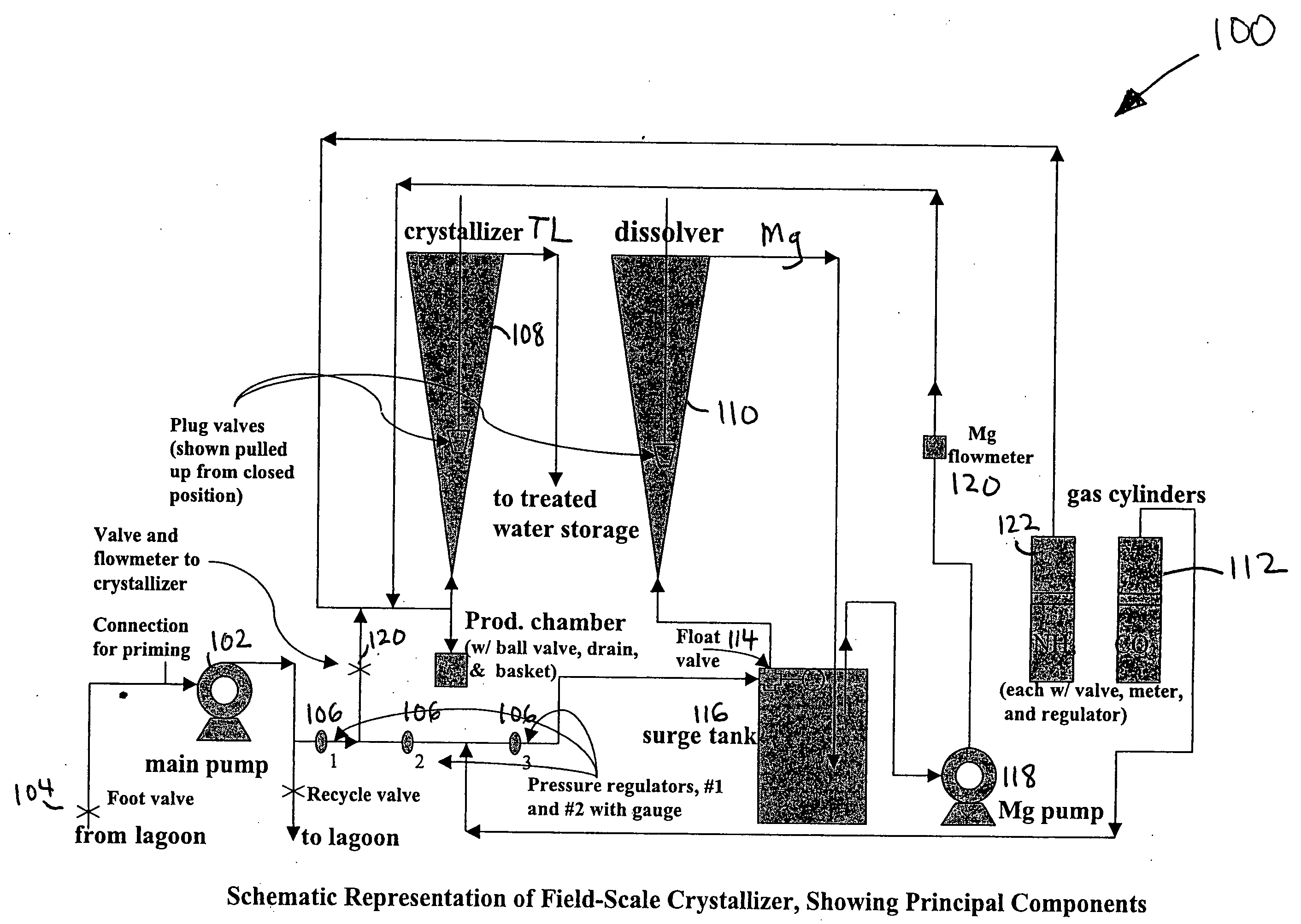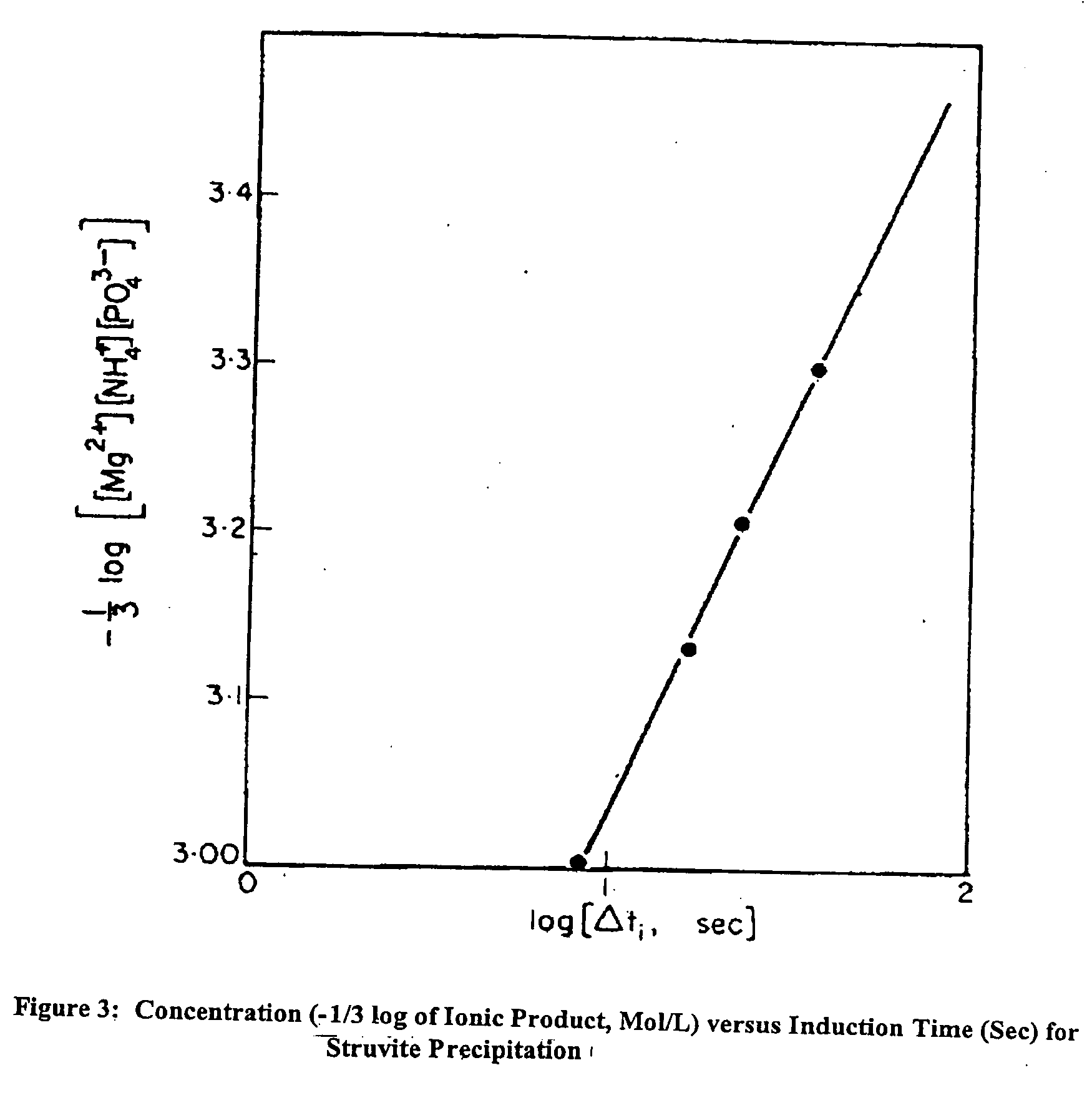Apparatus and method for removing phosphorus from waste lagoon effluent
a technology of waste lagoon effluent and phosphorus, which is applied in the direction of multi-stage water/sewage treatment, other chemical processes, separation processes, etc., can solve the problems of not removing phosphorus from the system, risking oxygen depletion of those waters, and accelerating the growth of oxygen-consuming water organisms, etc., to reduce the content of phosphorus and widen the particle size distribution
- Summary
- Abstract
- Description
- Claims
- Application Information
AI Technical Summary
Benefits of technology
Problems solved by technology
Method used
Image
Examples
Embodiment Construction
I. Experiments in Batch Mode and Resulting Design Elements for Struvite Crystallizer
Experiments in batch mode were conducted on locally obtained lagoon effluent to observe its behavior as it relates to several aspects of struvite precipitation. The observations enabled better-informed formulation of the basic design elements of a struvite crystallizer for removing phosphorus from that liquid. The experiments included (1) nutrient removal tests; (2) nutrient partitioning tests; (3) Mg supplementation tests; (4) pH enhancement tests; and (5) rate tests. Each of the five groups of tests are discussed below, followed by a summary of the crystallizer design elements. Methods of analysis for OP, TP, TAN, and Mg are summarized in the “Analysis of Liquid Samples” subsection of “Experiments with Laboratory-Scale Continuous Crystallizer” below.
Experiments
Nutrient Removal Tests
These tests were performed to check whether literature review information on struvite solubility had been interpr...
PUM
| Property | Measurement | Unit |
|---|---|---|
| Fraction | aaaaa | aaaaa |
| Fraction | aaaaa | aaaaa |
| Fraction | aaaaa | aaaaa |
Abstract
Description
Claims
Application Information
 Login to View More
Login to View More - R&D
- Intellectual Property
- Life Sciences
- Materials
- Tech Scout
- Unparalleled Data Quality
- Higher Quality Content
- 60% Fewer Hallucinations
Browse by: Latest US Patents, China's latest patents, Technical Efficacy Thesaurus, Application Domain, Technology Topic, Popular Technical Reports.
© 2025 PatSnap. All rights reserved.Legal|Privacy policy|Modern Slavery Act Transparency Statement|Sitemap|About US| Contact US: help@patsnap.com



